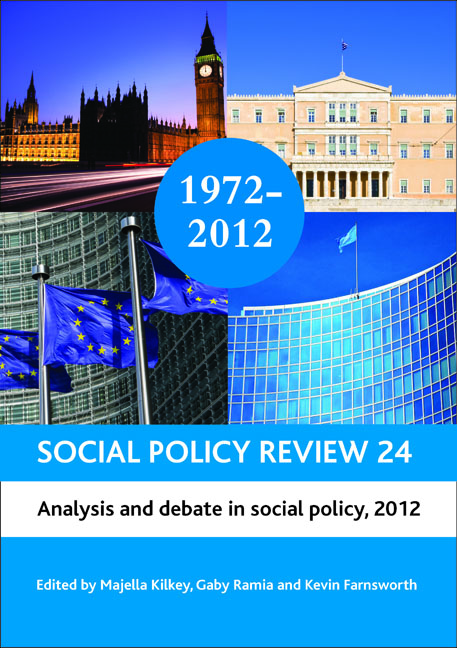one - Universal Credit: overview and gender implications
Published online by Cambridge University Press: 07 September 2022
Summary
Introduction and background
A simpler benefits (or tax/benefits) system has always been the ‘holy grail’ of social security reform in the UK. New social security ministers tend to come into office unable to fathom why their predecessors have been unable to achieve this – and leave office older and wiser. But after the introduction of the new tax credits in 2003 by the Labour government, critiques of the existing system as complex and confusing for claimants increased (eg Community Links et al, 2007; Bennett et al, 2009); and think tanks, and the government itself, developed variations on the idea of a ‘single working-age benefit’ (Freud, 2007; Brewer et al, 2008). The proposals from Left and Right often shared similar preoccupations and proposed similar benefit structures (Sainsbury and Stanley, 2007; Martin, 2009; Kay, 2010; Taylor et al, 2010). The core suggestion in most was to merge means-tested benefits/tax credits for adults in and out of employment, and often payments for some additional costs (such as for children and housing) as well.
It was the scheme proposed by the Centre for Social Justice (CSJ, 2009), however, that proved most influential with the Conservative– Liberal Democrat Coalition government taking office in May 2010. In part, this was because of a shared ideological perspective – in itself hardly surprising, as the Secretary of State for Work and Pensions, Iain Duncan Smith MP, had set up the CSJ before coming into government. This perspective included an abhorrence of so-called ‘welfare dependency’ (Lister and Bennett, 2010) – a concept that seems to have expanded to include reliance on tax credits in work, not just benefits out of work. The Secretary of State did identify the more pragmatic issue of disincentives to work (when commenting on why migrants rather than British-born claimants had taken many of the newly created jobs). But a simultaneous focus on ‘welfare dependency’ and cultural habits handed down through the generations appeared to contradict this rationalist perspective, and formed the backdrop to the government's welfare reform proposals (Duncan Smith, 2011).
Other key elements in the context for ‘welfare reform’ were the financial crisis and recession, and the Coalition government's determination to reduce the deficit as fast as possible.
- Type
- Chapter
- Information
- Social Policy Review 24Analysis and Debate in Social Policy, 2012, pp. 15 - 34Publisher: Bristol University PressPrint publication year: 2012

